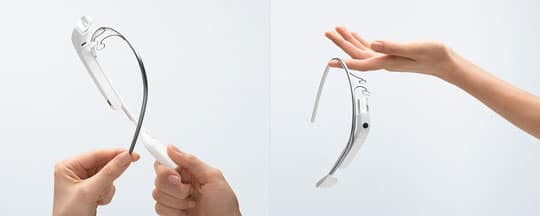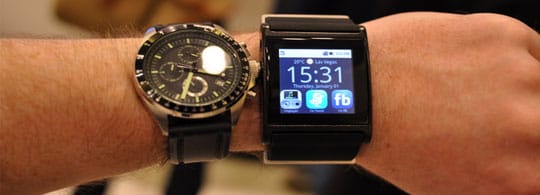Unless you have been hiding under a rock, you won’t have been able to avoid all the talk and hype about wearable tech recently. In the last few months we have had Google Glass, watches that are advanced as your smart phone and all sorts of other innovative inventions.
Technology companies are constantly ploughing money into idea and product development in the hope that they’ll soon stumble upon the next big thing in the world of gadgets.
And though this search does throw up a lot of red herrings, occasionally the tech companies get it right and new era of technological innovation is born.
At the moment, one of the main technologies being developed is wearable technology which, thanks to its futuristic appearance and far reaching potential, could really be here to stay.
What is wearable tech?

Wearable tech has come a long way from its humble beginnings as integrated lighting in 80s T shirts and now has the real potential to affect our lives in a multitude of ways.
Common forms of wearable tech include Google glasses, smart watches and a wearable computer. Many of these devices are able to connect to the internet, make calls and take photographs, not bad for a fashion accessory.
Which wearable product has the most potential?
Although Google glasses caused something of a stir when they were recently released, the technology with the most immediate potential is the smart watch.
Bridging the gap between digital watches and smart phones – who knew there was a gap to fill? – The watches are quickly getting the gadget world all hot and bothered.
What can a smart watch do?

The exact specifications of a smart watch depend on the model and the manufacturer, but in general smart watches act pretty much like a miniature smart phone.
They’re able to connect to the internet, make phone calls; take photographs, film video and many even have built in GPS. This gives users a huge amount of useful functions and applications, not to mention the games that can be downloaded.
What are the limitations?
At the moment the technology behind smart watches is still evolving so we’re seeing big advances every time a new product is released.
However it is still in its early stages and some user’s feel that the sound quality, usability and functionality still needs to be improved.
For example, games still haven’t been adapted specifically for the new devices and players have found that playing the available games on a device strapped to their wrist is less than comfortable.
What does the future hold?
Although smart watches are definitely an emerging technology, it’s difficult to say exactly what the future holds.
What’s for certain is that their popularity has grown hugely in recent years with experts estimating that shipments will rise from 1.4 million this year to 7 million by 2014 and then up to a staggering 140 million by 2014.
However, to put this in context, iPhone shipments for this year alone are expected to reach one billion, up from 100 million in 2007.
The main factor pushing the increase in sales of smart watches is that a few major manufacturers are expected to throw their hats into the ring, driving the technology and encouraging users to take up the new devices.
However the main problem at the moment is finding a big enough gap in the market for the new products to squeeze into, as most people that would be interested in a smart watch already own a smart phone which can do everything a smart watch can do and more. However you would be a brave person if you said the big digital and creative companies are not busy working on all sorts of new ideas to wow us with and take wearable tech to a whole new level.
This make predicting the future of smart watches difficult, but as many manufacturers seem determined to develop them no matter what, the future could still be exciting for this watch-based technology.
To know more about Wearable Tech please visit wiki page.
Digital and creative inspiration and ideas by the team at London based agency SAS London.





